Hello, welcome to the official website of Yunnan Shangri-La Balagezong Tourism Development Co., Ltd!

02
2015
-
12
Sects of tibetan buddhism
作者:

Tibetan Buddhism has a wide distribution in China, with many internal religious schools, many monasteries, many monks and nuns, and a relatively large social impact. It not only has a huge impact on the political, economic, cultural and other fields of Tibetan areas, but also has a great impact on the surrounding ethnic areas. It has also had a certain impact. The following five major sects are currently prevalent in Tibetan areas:
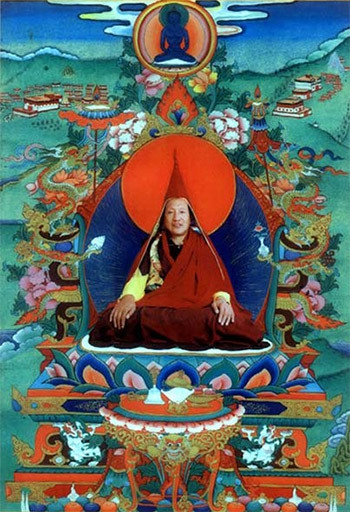
The Nyingma sect (Red sect) is dominated by decentralized development. The believers are generally monks at home, settling down, getting married and having children, and not all of them are concentrated in monasteries. Red monks have curly hair and braids, symbolizing countless angry gods. Around the fluffy hair, a symbol of countless empty mother. Red monks wear bracelets, rings, earrings, horns and the like, all of which are used to ward off evil spirits. Holding a tin stick when going out. There are three forks at the top of the tin stick, which represent nature, self-nature and compassion respectively. There are three human heads under the fork, symbolizing Dharma, newspaper and response.
Because the Nyingma Sect belongs to early Tibetan Buddhism, it also retains a part of the human body as a legacy of sacrifice in its religious ceremonies. This legacy has had an impact on other schools of Tibetan Buddhism. In Tibetan areas where politics and religion are integrated, since the fifth Dalai Lama, whenever major events occur in Tibet, monks from the Nyingma faction must be invited to attend ceremonies and chant mantras. Cruel artifacts, majestic mana, intimidating people's hearts, make people's spirit and flesh tremble!
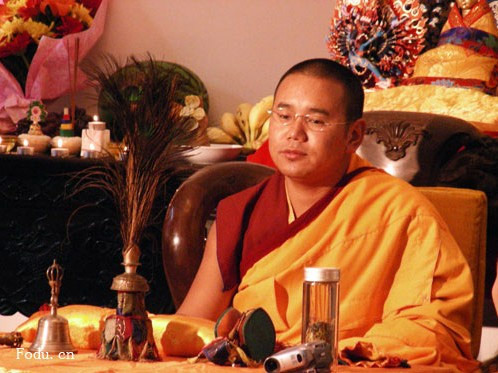
Sakya (Flower Sagya) When the Nyingma monks vigorously promoted the Dharma, the famous monk Kung Che Jeb (1034-1102) established a "White House" in a gray-white soil in the valley of the Zhongqu River in Later Tibet ". Based on this, Kuan Gongchejeb preached and preached the Dharma and created a new sect, the Sakya Sect ".
Sakya, which means "white earth" in Tibetan, is also called Sakya Monastery as the temple built on that white land. Because the temple walls are painted with red, white and black patterns symbolizing Manjusri, Guanyin and Vajra's hands, the Sakya Sect is also known as "Hua Jiao".
The leader of the Sakya sect has been passed down from generation to generation by the Ken family. There are two lineages of lineage and legal system. The Sakya sect does not prohibit taking a wife, but stipulates that it will not approach a woman after having a child.
The Sakya Monastery, located in the back of the Tibetan temple, is a repository of wisdom. There are more than 10,000 Buddhist scriptures and Buddhist scriptures hidden there, which were copied by the writers of Wei, Tibet and Kang in the Basiba period, who concentrated gold juice, silver juice, cinnabar, precious stones and ink. It can be called a treasure in Buddhism. There is another "square sutra" in Sakya temple, which is one meter long and one meter wide. The upper and lower parts are protected by splints. All of them are written in gold juice. They are regarded as treasures among treasures. The entire Sakya Monastery has collected more than 40,000 volumes of Buddhist scriptures, including a large number of "Bayeux Sutra". No wonder the Sakya Temple, which is full of wisdom, is called "the second Dunhuang".
It is particularly worth mentioning that the Dege Scripture Printing House set up by the Sakya Sate in 1550 AD at the Dege Gongqin Temple in Sichuan, which is the most famous printing house in Tibetan areas. More than a thousand kinds of classics, such as Tibetan Buddhist scriptures, important writings of various sects, calendars and medicine, have played an important role in protecting Tibetan Buddhist culture.
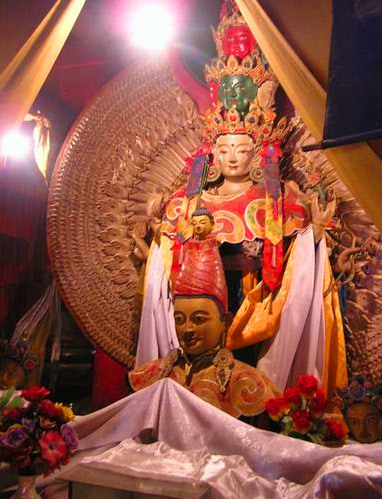
Kadang Paika, Tibetan refers to the Buddhist language; when, refers to the professor. Kadang, which means that all the language of Buddha and the teachings of Sanzang are taken in the "Sanshidao" sub-professor handed down by the ancestor of the sect, and practiced according to it.
The Kadam school had a great influence on other schools of Tibetan Buddhism because of its systematic teaching and standardized practice. Some important monks of the Kagyu and Sakya schools had learned from the Kadang school. The Gelug Sect was established directly on the basis of the Kadang Sect and is known as the "New Kadang Sect. In addition, all the great doctrines in Tibetan Buddhism are also derived from the Kadam school. The famous big and small Russian divisions of this school-Russian Lebhirao and Russian Rodamhirao-are known as the "New Yiming" in the history of Tibetan Buddhism ". The Sangpu Temple of the Kadam School, after the big and small Russian teachers, was an important stronghold for the teaching of the five major theories of the Ming Dynasty in Tibet until the 15th century AD, and played an important role in the academic development of Tibetan Buddhism. After the rise of the Yellow Church (Gelug Sect) in the 15th century AD, because the Gelug Sect developed on the basis of the Kadam Sect doctrine, the monasteries that originally belonged to the Kadam Sect gradually became the Gelug Sect monasteries. Thus the Kadang faction no longer exists alone in Tibetan society.
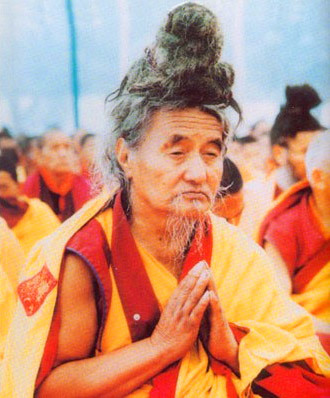
Kagyu School (Bai Jiao) Kagyu, Tibetan meaning "Buddhist language inheritance", Chinese translation oral. Refers to the inheritance of the teachings of the secret mantra taught by the King Kong Buddha himself. Because the monks of this sect wear white monk skirts and jackets, commonly known as "white religion".
The founder of the sect was Marba, a Buddhist from a wealthy family. In fact, Marba is a Buddhist master at home. Since the age of 15, he has been to Lhasa, India, Nepal and other places to study scriptures. At ordinary times, Marba wears a white monk skirt according to the habit of Indian Tantra. Later, this white monk skirt has become the cassock style of the sect for generations.
The most legendary of the Kagyu monks is Milareba, known to women and children among the Tibetan people. Mirareba's father died when he was seven. He lived alone with his mother, was bullied by relatives, his property was divided up, and life was very difficult. He began to practice the Dharma at an early age, and his motive was very naive. He wanted to use magic to eliminate the "bad guys" who bullied his family ". In 1077, at the age of thirty-eight, he found the famous Marba. After observing him for six years and eight months, Marba was convinced that his "root device" was good and could make a talent, so he preached all the secret methods to him. Milareba practiced according to this method and finally became a legendary figure who could fly in the air, subdue demons and monsters, and have magical powers. His story is recorded in the Tibetan literary masterpiece "Mirarjba Biography", widely circulated in Tibetan areas, enduring.
The Kagyu Sect is a sect with more branches. The number of its branches is uncomparable to that of any sect of Tibetan Buddhism.
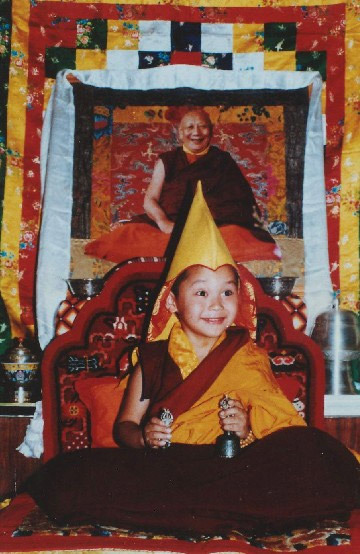
Gelug Sect (Yellow Sect) Gru, which means good law or good rule in Tibetan, is named after the sect's advocacy that monks should strictly observe the precepts. The monks of this sect wear yellow monks hats, commonly known as the Yellow Hat Sect or the Yellow Sect.
The Gelug Sect is a sect that flourished after the Tsongkhapa Reformation in the late 15th century. The founder, Zongkhapa, was originally a monk of the Kadang School. In 1373 AD, he went to the Wei-Zang area to study the scriptures. He followed the monks of the Sakya, Kagyu, and Shalu schools successively. He studied the theories of the show and secret scriptures of various schools of Tibetan Buddhism from the early 1980 s to the end of the 1980 s. He is worthy of being a monk "standing on the shoulders of all masters". He has absorbed the Kadang school's method of paying equal attention to precepts, determination and wisdom. Absorbed the rigour of Sakya's study of Buddhist scriptures. He advocated paying equal attention to both manifesting Buddhism and Tantric Buddhism, and absorbed the essence of all Buddhist sects in the practice of Tantric doctrines. He wrote books and preached, taught and preached, and established a high prestige in the Wei-Tibet area.
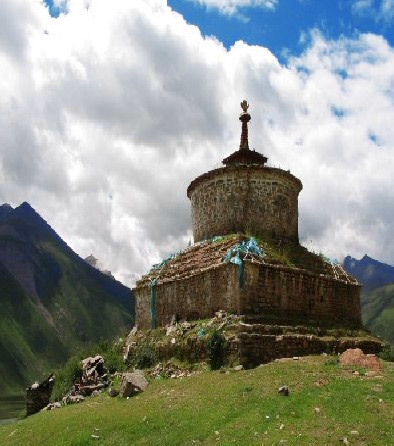
最新动态
2022-08-23
The current outbreak, the responsibility is on the shoulder, Balagzon in action!
Since the outbreak of the epidemic in Tibet on August 7, 2022, a large number of tourists from Tibet to Yunnan have entered Shangri-La from National Highway 214. The People's Government of Diqing Prefecture has issued a series of relevant policies and measures and actively responded. Medical staff, police and other front-line personnel stick to the front line, have been involved in the "war of resistance" of the epidemic without gunpowder smoke, and jointly participate in dealing with a major public health security incident faced by mankind.



